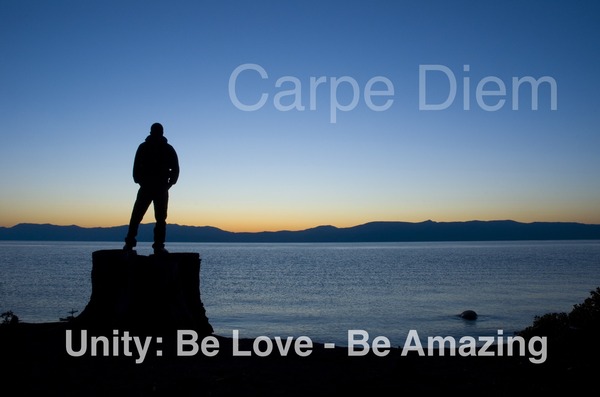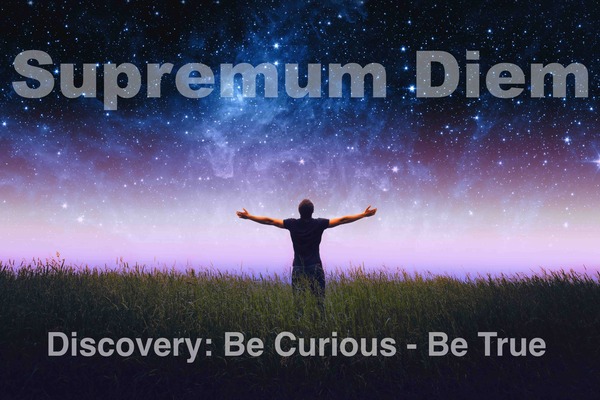The Divine Elements
 Wednesday, October 28, 2009 at 9:11AM
Wednesday, October 28, 2009 at 9:11AM
Everything man has created was once an idea.
Look around -- cars, trucks, trains, buildings; consumer products, like radios, iphones, the computer you may be reading this on; but also soft “wares” like stories, songs, music, the constitution and laws. Even performances like acting, dance, and poetry. All began as inspired ideas.
All innovation consists of four elemental steps; an inspired idea, an impassioned plan, diligent action and courageous engagement.
Yet, the world contains only those innovations that have been brought into form by man through these four steps. We are the creators. Nature, of course, can only be harnessed, synthesized, rearranged, but not recreated by man.
No one on Earth can create a rose, for instance. Yet, like an artist, we are free to paint on nature’s canvas with the raw materials provided for us. The real treasure trove of innovation, however, is in the mind, yet most ideas remain “no thing”— or what we know as “nothing.”
Put in modern day terms, the essential steps of innovation are: Dream, Believe, Love, and Create. All things created begin as dreams, plans are impassioned with unshakable belief, action is made diligent through love of work, and creations are brought into form and presented to the world through courageous engagement.
"The essence of innovation is: Dream, Believe, Love, Create"
Our highest aspirations for each of these elements are: receptivity, certitude, devotion, and valor.
Like perfection itself, these ideals can only be approached; never perfected. Yet, though the reach for these ideas, the pursuit of perfection, we achieve excellence.
I’ve created a mantra, reaching up, from form to spirit, that I use every day: “No fear, no need, no doubt, no limit, no end,” including the intutiive source of all innovation as "no end." In other words, these aspirations are:
- Receptivity— Dream without limit
- Certitude— Believe without doubt
- Devotion— Love without need
- Valor— Create without fear
Where “no thing” has formed, we find a failing of one of these essential steps: No idea, no plan, no action, or no results. This is taking the outsider's view, looking at the failings of innovation. Of course, any one of these elements could be a failing of degree, i.e. it’s not that they had “no idea,” but a weak idea, bad plan, too little action, etc.
There is a need for everything. Yet, it's not just the need, but the need intensity that counts. Is the intensity of need sufficient to dedicate sustained effort?
Within the innovator -- the insider's view -- wherever there’s a failure, we find one of these elements in short supply: no inspiration, no belief, no devotion or no courage. It’s essential to drive through and rise above these four personal struggles; some one, some how, some day, some die...Yes, but some rise.
I’ve adapted the mantra from Yoganada’s, To be Victorious in Life; "I can, I must, I will," and added "I do" and "I am," in response to the big four personal struggles facing innovators. Indeed, nothing happens until someone takes ownership; real ownership.
Suppose you have a innovation in mind. Let's see how you would make this your own.
First off, it's apparent that "some one" will make this innovation happen. You think: "I can be the one." Then, "some how" it will take form. You think: "I must find the way." Next, "some day" this will happen. You think: "This is my time! I will make/do this now." Finally, "some die" trying but, despite intense fears, you think: "I dare to create. If I'm going to die anyway, what better way to live than in the service of my destiny?"
- Some one— I can (dream) do this
- Some how— I must (believe) find a way
- Some day— I will (love) and today is the day
- Some die— I do (create), despite my fears
- Some rise— I am the one, true ownership
This is the essence of ideas brought into form, stated in modern day language that anyone can understand.
"If I'm going to die anyway, what better way than in the service of my destiny?"
Putting this all into practice, here's another way to line up the four guiding elements:
Be Curiuous. Be True. Be Love. Be Amazing.
It's a choice; be of good cheer and resolve-- not just to live each day, Carpe Diem...

.... But, to live wholeheartedly, as if today were our final one-- Supremum Diem.

The Ancient Elements
What came as an revelation is that this sequence is as old as humanity, and I’ve come to believe that these four essential steps are the divine elements; Air, Fire, Water, and Earth.
These elements— the ancient version— have been dismissed by taking them literally to mean atomic elements, like one of the 118 or so discovered in theory or in nature. Rather, they were intended to be metaphoric highway to the infinite— and back.
The Divine Elements are the essence of creation, from inspired idea to final form; Air represents ideas and inspiration. Fire is will and belief. Water represents devotional action; to immerse oneself in one’s work. Earth represents the end product; form or results. With the fall of the human awareness into the dark age, it’s not surprising that we lost this understanding.
The fifth Divine Element, Spirit (Ether), is the source of it all. Dismissed, of course, by those who dismiss the divine consciousness altogether. Regardless of source of inspired ideas— be it a glimmer of the divine or local neuron firings— the Divine Elements follow in specific order; Air, Fire, Water, Earth. In modern terms; Dream, Believe, Love, Create.
Do you see how The Tao, the way of nature, assends the five elements in exact order, from Earth to Spirit?
- Practice it's way
- Move in it's cycle
- Dance in it's passion
- Learn it's wonder
- Awaken in it's spirit
The moment it dawned on me that the divine elements were metaphoric, I searched about and discovered that this metaphor was express all over antiquity, represented quite explicitly by four distinct physical representations: a crescent for Air, like moonlight reflecting from above; a triangle for Fire, like the drawing tool used to devise plans; a circle for Water, representing ceaseless, unbounded action, and a square for Earth; suggesting physical or finished form with 3 dimensions.
 What’s unique and presented here is the realization that the divine elemental are also the essence of all creativity (spirit to form), and not just the illusive path to enlightenment (form to spirit), universally embraced by spiritual traditions around the world and embodied by ancient stupas shown here.
What’s unique and presented here is the realization that the divine elemental are also the essence of all creativity (spirit to form), and not just the illusive path to enlightenment (form to spirit), universally embraced by spiritual traditions around the world and embodied by ancient stupas shown here.
Still skeptical? Consider this: Where do good ideas come from?
If you believe as I do, then you'll recognize that this path is literally true. Ideas "flash" as a moment of insight. Those ideas "flash" from spirit over the intuitive highway that connects man with the divine consciousness. It is then entirely up to us to bring these ideas into form, dismiss them, or give them away.
The reason they "flash" and not flow, of course, is that we are mostly disconnected from the source. Through meditation, this intutuive channel is opened according a great master of wisdom, Sir Yukteswar.
"Everything is created from the Divine Elements; not made-up of air, fire, water, earth, but made by air, fire water, earth"
We’ve had these elements around us forever, yet have lost the obvious connection to ourselves, or destiny, and our purpose in life. We must again become masters the obvious: Everything is created from the Divine Elements -- not made-up of air, fire, water, earth— but made by air, fire water, earth, e.g. by us through receptivity, certitude, devotion, and valor. It is exactly as the ancient philosophers said in the language of their day; everything we create is by dreaming, believing, loving, and creating form.
In my view, success is creating legacy from destiny in this lifetime. Destiny is found in the aspirational, idealized components; i.e., receptivity, certitude, devotion, and valor. Legacy is what you envision and actually create in this lifetime: i.e., dream, believe, love, create. Mastery is the self you become through the process, embracing your inner game; i.e., no fear, no need, not doubt, no limit, and no end.
I count him braver who overcomes his desires than him who conquers his enemies; for the hardest victory is over self. — Aristotle
The purpose of success, then, is not just to create legacy but to evolve and master yourself through this life's accomplishments. There’s no legacy without mastery, yet an external vision is always necessary to drive self-mastery; to conquer fear, to abandon attachments, to eliminate doubt, and to expand thinking. Life it your proving ground!
So find your own "big dream;" your destiny in this lifetime. Then, as you continue to bring that dream to life, your legacy, you’ll master yourself in the process


Reader Comments